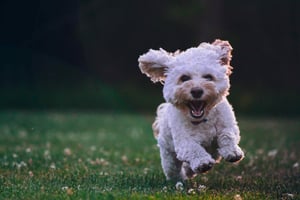Are you looking to teach your puppy to sit? This guide provides a step-by-step approach to get your...
How to Kennel Train Your Puppy: A Step-by-Step Guide
Are you a proud new puppy owner looking for the best way to kennel train your pup? Look no further! In this guide, we’ll provide a step-by-step overview on how to kennel train your puppy. We’ll cover the best practices for kennel training, provide tips for how to make the experience as stress-free as possible for your pup, and offer advice on how to ensure the process runs smoothly. Let’s get started!
Understanding Kennel Training Basics
Kennel training is a great way to provide your pup with a safe and comfortable space of their own. It’s also an effective way to potty train your pup and help them adjust to their new home. The key to successful kennel training is to take it slow and be patient. Your pup will need time to adjust to their new environment, so don’t be discouraged if they don’t take to the kennel right away.
Before you start kennel training, it’s important to ensure that you have the right kennel for your pup. The kennel should be large enough for your pup to move around in and turn around comfortably, but small enough to make them feel secure. It should also be made of a durable material that is easy to clean. Finally, make sure the kennel is placed in a quiet area away from any loud noises or distractions.
Getting Your Puppy Comfortable with the Kennel
Once you’ve chosen the right kennel for your pup, it’s time to start getting them comfortable with the kennel. Start by placing some of your pup’s favorite toys and treats inside the kennel to encourage them to explore it. You can also place a blanket or bed inside the kennel to make it a more inviting space. If your pup is hesitant to enter the kennel, try giving them small treats or toys as rewards when they take a few steps inside.
Once your pup is comfortable entering the kennel, you can start closing the door for short periods of time. Start with just a few seconds and gradually increase the amount of time the door is closed. If your pup becomes anxious or starts barking, open the door and try again later. Remember to give your pup plenty of praise and treats when they stay in the kennel with the door closed.
Making the Kennel a Happy Place
The goal of kennel training is to make the kennel a happy place for your pup. When your pup is comfortable in the kennel, you can use it as a safe space for them when you’re not home. You can also use it as a reward for good behavior. For example, if your pup does a trick, you can reward them with a treat in their kennel.
It’s important to remember that kennel training should be a positive experience for your pup. Don’t ever use the kennel as a punishment. Instead, use positive reinforcement and reward your pup with treats, toys, and verbal praise when they enter the kennel. This will help reinforce the idea that the kennel is a safe and happy place.
Tips for a Successful Kennel Training Experience
Here are a few tips to help you have a successful kennel training experience with your pup:
- Be patient: Kennel training takes time, so don’t be discouraged if your pup isn’t taking to the kennel right away. Give your pup time to adjust and be patient with them.
- Go slow: Take it slow when introducing your pup to the kennel. Start by just placing their favorite toys and treats inside and gradually increase the amount of time the door is closed.
- Make it a positive experience: Never use the kennel as a punishment. Instead, use positive reinforcement and reward your pup with treats, toys, and verbal praise when they enter the kennel.
- Give them breaks: Don’t leave your pup in the kennel for too long. Give them regular breaks to stretch their legs and explore their new environment.
Conclusion
Kennel training is an important part of puppy ownership. It’s a great way to provide your pup with a safe and comfortable space of their own, as well as help them adjust to their new home. With the right kennel, patience, and lots of positive reinforcement, you can kennel train your pup in no time. Good luck!



